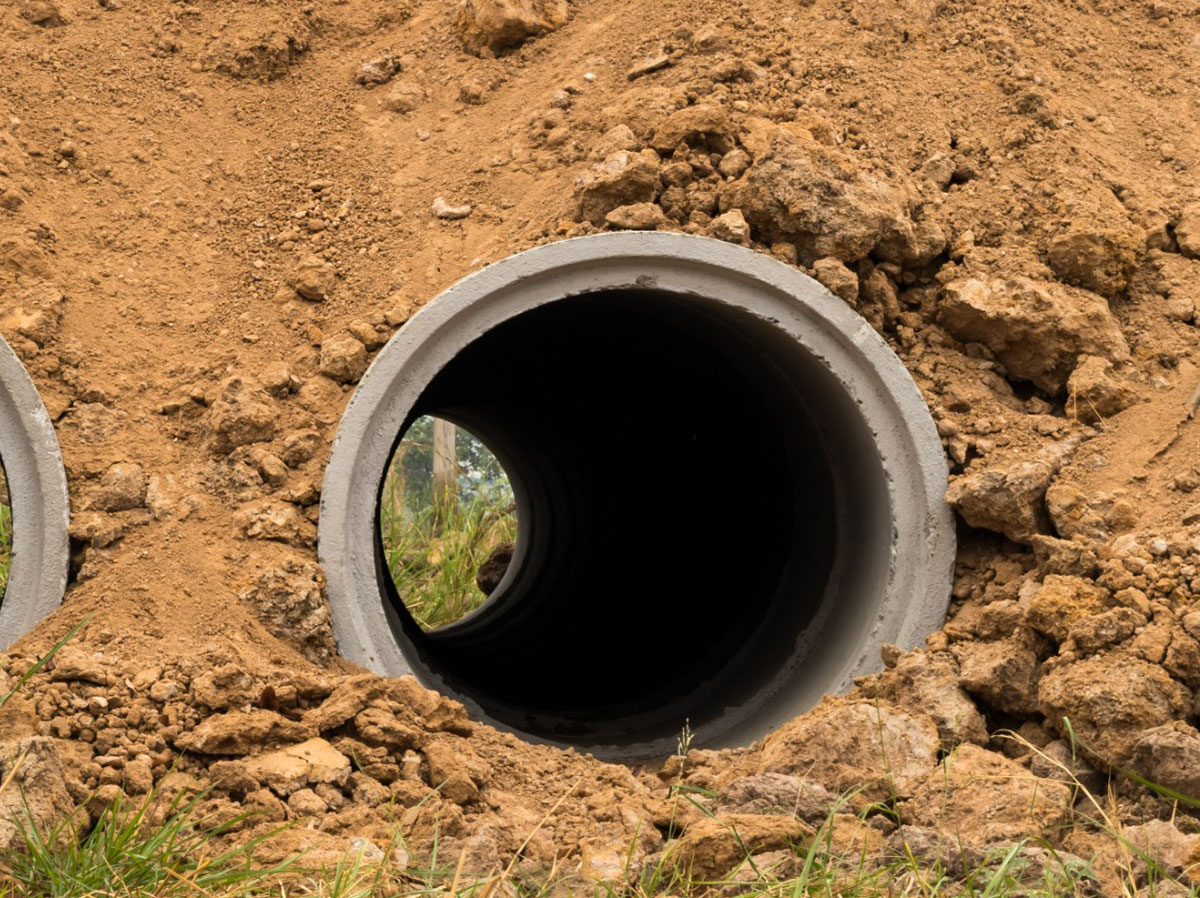High Quality Road Construction for Long-Lasting Roads
High Quality Road Construction for Long-Lasting Roads
Blog Article
Culvert Installation Made Easy: Step-by-Step Guide for Success
Setting up culverts may look like a straightforward task, yet ensuring an effective result calls for careful planning and implementation. From selecting the proper culvert size to integrating proper water drainage procedures, each action in the installment procedure plays a critical duty in the functionality and long life of the culvert system. By adhering to a methodical technique and taking notice of vital details, the setup can continue efficiently, reducing prospective concerns down the line. Keep tuned to uncover the crucial steps and considerations that can make culvert setup a smooth and successful venture.
Picking the Right Culvert Dimension
Selecting the suitable culvert size is critical for making sure efficient water flow and architectural stability in culvert setup tasks - Pad Construction. The dimension of the culvert straight impacts the flow ability of water through the structure. A culvert that is as well tiny can bring about flooding and overflow, while one that is also huge may lead to reduced water rate, potentially causing sediment build-up and blockages
To establish the right culvert size, aspects such as the watershed location, height circulation prices, and hydraulic performance requirement to be thoroughly thought about. Computations based on these specifications help in selecting a dimension that can sufficiently take care of the predicted water volume while decreasing the risk of blockages and architectural failing.
It is important to seek advice from engineering standards and requirements to guarantee that the chosen culvert dimension meets the job needs and neighborhood policies (Pad Construction). By picking the appropriate culvert size, task managers can enhance water circulation, prevent potential issues, and improve the general effectiveness and longevity of the culvert installment
Preparing the Installation Website
Reliable culvert setup necessitates careful prep work of the setup site to ensure ideal structural assistance and performance. Before commencing the installation process, it is essential to remove the website of any kind of debris, greenery, or blockages that might hinder the culvert's positioning. Ensuring a level structure is important for the proper alignment and stability of the culvert. This may involve grading the website to develop a smooth, even surface that can adequately support the weight of the culvert and any awaited lots. Furthermore, appropriate compaction of the dirt under the culvert is necessary to avoid working out or shifting gradually.
Moreover, it is crucial to consider aspects such as dirt make-up, groundwater levels, and ecological impacts when preparing the setup website. Performing a detailed website analysis can assist determine any type of prospective challenges or threats that might impact the culvert's efficiency. By taking the time to prepare the installation site correctly, you can assist guarantee a successful culvert installment that meets architectural requirements and makes certain lasting performance.
Putting the Culvert Properly

The quality at which the culvert is placed is essential for keeping an appropriate slope for water circulation. A progressive incline aids prevent merging and promotes effective drainage. In addition, the culvert ought to be oriented correctly to guarantee that the inlet and electrical outlet are in the proper locations. This positioning is necessary for the culvert to operate efficiently in handling water flow.
Backfilling and Compacting the Dirt
Correct backfilling and compaction of the soil around the culvert is important to make certain stability and stop prospective problems in the future. As soon as the culvert is correctly put, the next important step is to backfill the location around it with suitable material.
After placing the backfill product, it is essential to compact it in layers of consistent thickness. Making use of a compactor or a mechanical tamper, portable the dirt carefully to stay clear reference of harming the culvert. Compaction assists in decreasing the possibilities of settlement and ensures uniform assistance around the culvert. It is essential to compact the dirt evenly on all sides of the culvert to preserve its architectural integrity.
Proper backfilling and compaction not only offer stability to the culvert however likewise help in stopping dirt erosion and keeping the longevity of the culvert system.
Ensuring Proper Drainage Integration
Integrating reliable drain remedies plays a critical function in the total performance and longevity of culvert installments. Proper water drainage combination is necessary for taking care of water flow, preventing erosion, and ensuring the architectural stability of the culvert system. To accomplish this, it is important to make an extensive drain plan that thinks about factors such as the volume of water expected, the topography of the location, and the kind blog here of soil existing.

Furthermore, incorporating functions like erosion control procedures, such as riprap or greenery, can further improve the effectiveness of the drain system. By thoroughly intending and executing these water drainage services, culvert installments can work efficiently and withstand the test of time.
Conclusion
Finally, proper culvert installation is vital for maintaining effective drain systems. By choosing the ideal culvert dimension, preparing the setup site, putting the culvert properly, backfilling and compacting the soil, and making certain correct drainage integration, success can be attained. Following these actions will assist guarantee the long life and performance of the culvert, ultimately adding to the total success of the drain system.
Report this page